How to Use Storytelling in Video Lessons to Boost Engagement
Lesley Vos
You want your online course to attract, engage, and sell. There’s just one tiny problem.
While it’s not that challenging to attract users if you know how to design and promote your online course properly, its overall success depends on your ability to engage and provide a captivating experience to students.
And that’s where a real struggle comes in: With online users drowning in a sea of content, how do you make them want to listen to your video lessons? Forget the boring data and academic tone and focus on building a personal connection instead. Tell a story to your students, as it’s a highly effective way to win the battle for their attention.
In this article, you’ll find out why storytelling is so powerful and learn how to use its core elements in video lessons to boost engagement and make students remember your online course.
Why Storytelling in Video Lessons?
Students like stories — we all do — because that’s how the human brain processes information.
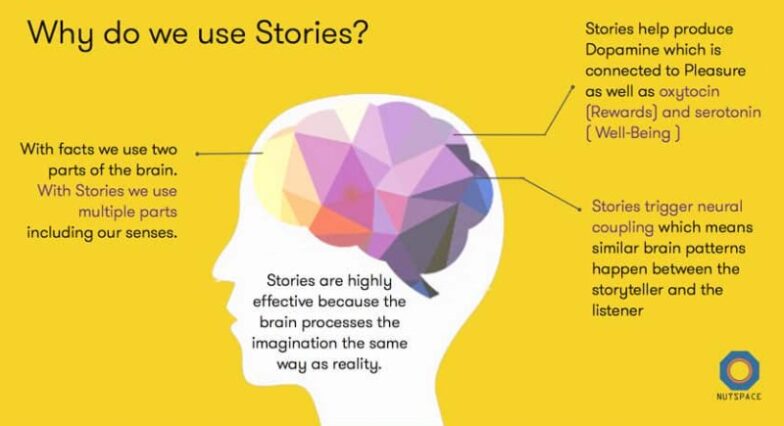
The brain retains 70% of information through stories and only 10% from data and statistics. This happens because the data activates only one part of our brain, the language part, while stories activate the area responsible for experiences. In other words, when we read a story, we feel as if it truly happens.
That’s why people use feelings, not facts, to evaluate the information. A story gives an emotional response, which helps us remember it.
As for video lessons, another element comes into place: visual stimulation. Most people are visual beings, and our brain processes images 60,000 times faster than text. This means that when we see image-related information, we are 10x times faster at taking it in.
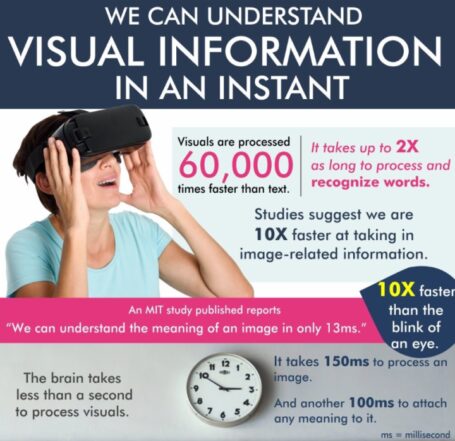
All this makes video storytelling call the shots. Not only do you write stories for users to read, but you also show stories for users to see and listen to for even greater engagement and retention.
By strategically enveloping stories in video lessons, you’ll provide the emotional glue that connects students to your learning material. Stories give meaning to data, reshaping it into something worth knowing and sharing.
Implementing Storytelling in Your Online Course
That’s all well and good, but how do you implement stories in your online course material? In other words, how can you construct the course material around a story?
Your online course has objectives, and every video lesson has its own goals. You need to create a storyline around those objectives and tell it with the help of your course material.
A standard story construction, or a narrative arc, works here:
- Beginning (exposition: setting the scene and introducing the problem)
- Middle (rising action, climax: the challenge a protagonist (a hero) has to go through to reach goals)
- End (falling action, resolution: the new post-challenge reality, the moral of the story)
It makes sense to design the whole course as a story, with one unit to introduce the problem, a few more lessons to illustrate the challenges (to tell the story), and a final video lesson to finish the story and show how the protagonist has changed.
But depending on the objective, you can also construct each video lesson like a complete story with a beginning, middle, and end. For video lessons with multiple objectives, break them into a series, focusing on one goal for each unit.
This will help engage students during a lesson, and it will be easier for them to go back to that specific video later instead of scrolling through the whole course in search of the necessary information.
Now let’s look at five storytelling elements that will help your lessons stand out and engage students throughout the storyline.
5 Storytelling Elements to Include in Video Lessons
1. Hero
Every story needs a hero. According to a classic storytelling technique, this hero leaves home on a journey to reach a goal, meets problems and overcomes challenges, and comes back home with a reward.
For your video lesson to engage and win trust, ensure you give your audience a hero they can relate to. Understand your students: their needs, motivations, emotions, pain points, fears, and cultural backgrounds. Marketers know this as a buyer persona, a semi-fictional representation of their ideal customers to understand how to sell to them.
In the case of video lessons and online courses, the best option would be to make your student the protagonist (hero) of the story so they’ll know you’ve crafted the content specifically for them.
If you decide to create a fictional character for the story, ensure it will be easy for your students to associate themselves with your story’s hero. When seeing “themselves” in videos, they’ll get engaged better.
Just think of Hollywood movies to understand the concept:
Why did millions of young adults get attached to The Twilight Saga? Bella Swan. It was easy for the audience to associate themselves with her character traits: hope, courage, and independence. Plus, we all were young adults and understood the problems she faced in school.
And why was Marty McFly, not Doc, the protagonist of Back To the Future? The same reason: Most people are more familiar with being a teenager trying to solve everyday problems than being a genius who understands the physics behind time traveling.
Besides the hero, you can think of tiny wooden personas of storytelling: so-called Pinocchios. These are abstract secondary characters guiding students through your storyline when necessary. Video gamers know them as NPC, and MS Word longtime fans may remember them as the interactive animated characters Clippit, Hoverbot, or Scribble.
2. Context
Storytelling is not only about words. Every element of your online course serves as context for students to follow the information flow and watch your video lessons till the end. Context is about implementing the “Show, not tell” principle to your story.
Given that the human brain thinks in images, consider all possible avenues for your lesson to become a comprehensive composition in learners’ minds.
What can you use besides words and text-based learning material?
Think of colors, filters, background music, and the overall environment a user will see in the shot when watching your video lesson. You’ve heard about color psychology, haven’t you? It says that every color and tone evokes specific associations and conveys particular messages.
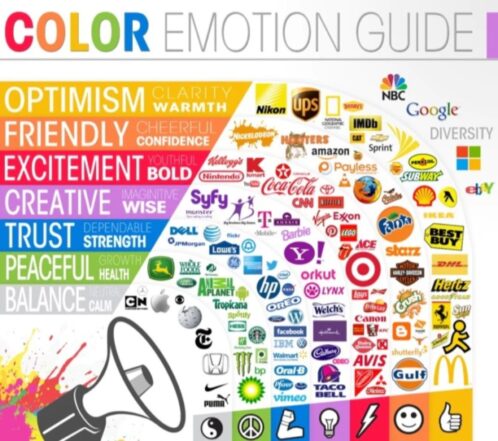
Why do you think Darth Vader’s helmet and the overall suit are black, not gray or red, for example? That’s because most people, regardless of their demographics and cultural background, associate the color black with evil and power, while red and gray aren’t that universal. McDonald’s and Coca-Cola’s logos are red to increase appetite, and social media’s (Facebook, Twitter, LinkedIn) are blue to communicate trust, reliability, and relaxation.
That’s how the context works.
The colors and filters you use for video lessons’ design can influence the learners’ mood. Bright, bold colors are for hope and happiness, while dark and plain backgrounds may evoke loneliness or emptiness. Depending on the topic of your online course and the information you share with learners during video lessons, you may revise color schemes or font types for your course material.
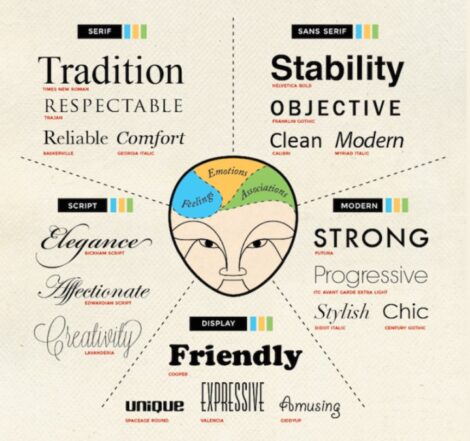
Your buyer persona — a student’s personality, demographics, experience, and cultural background — also matters. Thus, farmers and investors may have different associations with the green color:
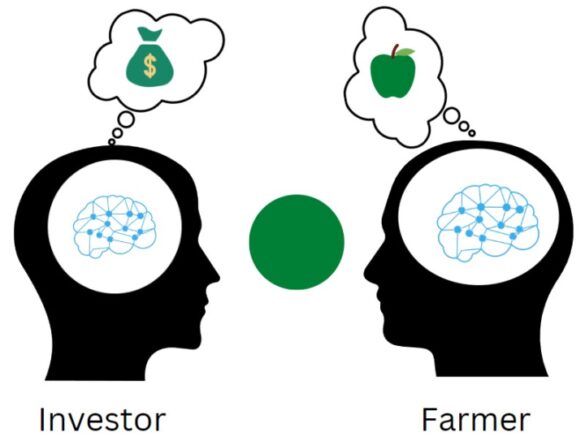
When choosing color schemes for your video lessons, remember your brand’s visual identity. Designing the online course with your brand colors, fonts, and logo increases its awareness and recognition among users.
3. Music
Music is a strong trigger for communicating different emotions to learners. The proper sound effects give a feeling of completeness and interactivity and may create powerful emotional associations, engaging viewers far more than words or pictures.
It stands to reason that you won’t set The Imperial March as background music for your video lesson. But adding a short segment in a proper place might re-engage learners and pique their interest in the info you share. A crash or bang sound effect works the same: to grab attention and help users remember what you’re saying.
Choose sound effects or background music for your video lessons depending on the topic and the mood you want to create. While it’s weird to play upbeat tracks during a lesson, some slow, reflective melodies in the background can build the atmosphere of coziness and trust in the information a listener receives.
4. Element of Surprise
People watch over a billion hours of YouTube videos daily, so it’s no wonder their attention span is super short. Online users consume tons of content; over time they become picker and more challenging to hook and keep engaged.
The good news is that attention span can evolve. For that, your lesson needs “traps” to capture attention again and again throughout the video. In storytelling, we know this instrument as a plot twist that makes the audience think, “What?!” or “Wow!” and continue reading or watching to learn what comes next. TV series call it a cliffhanger; in plain English, it’s an element of surprise.
In video lessons, this element of surprise can be a rare fact, something catchy in the background (a sleeping cat behind a speaker’s shoulder, for example), a quote inset from an influencer, a twist in your lesson plan — anything that will make students pay attention to you.
Pro Tip: While unexpected, these elements should be relevant to the topic you cover in video lessons.
5. Tiny Details
Details help you build a context. While listening to a video lesson, viewers will pay attention to everything in the shot: the clothes and accessories a speaker wears, flowers or pictures (or a cat) in the background, and the like. All this helps them build associations and takeaways.
Here’s an example:

President Zelenskyy records videos for the people of Ukraine every day to report on what’s happening. While the information he shares is educational and critical for viewers, they also pay precise attention to what Zelenskyy has around him. The ceramic cockerel in the above shot is the tiny element that engaged thousands of people and boosted tons of video shares.
That cockerel is the symbol of Borodianka (Kyiv region), which resisted the occupiers. A similar one sat atop a kitchen cabinet that survived in the destroyed house. For those seeing the cockerel in Zelenskyy’s video, it was a signal Ukrainians resist and stand no matter what.
It’s important to avoid adding too many such details to video lessons. It creates a cluttered background set that can distract or disorient a student. Instead, organize the shot so they see where to focus.
Also, ensure that all background elements have a purpose and support your message.
Ready to Try Storytelling Elements in Your Video Lessons?
Storytelling is a powerful technique for brands to build awareness, engagement, and loyalty because it hooks users and evokes desired emotions encouraging them to buy from you or support your product.
Make this technique work for your online course! Build your video lessons with storytelling elements in mind.
Become a hero your audience would like to relate to, consider context, and add tiny yet eloquent elements to engage viewers and tell the story that will change lives.